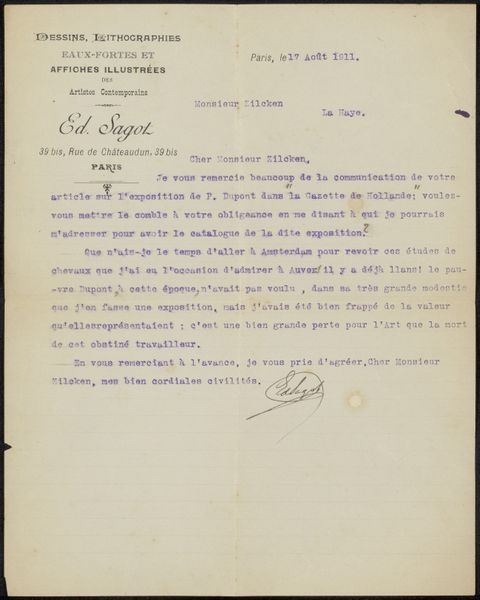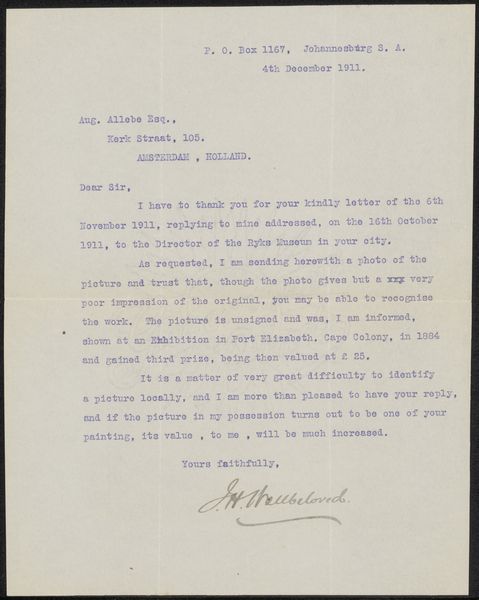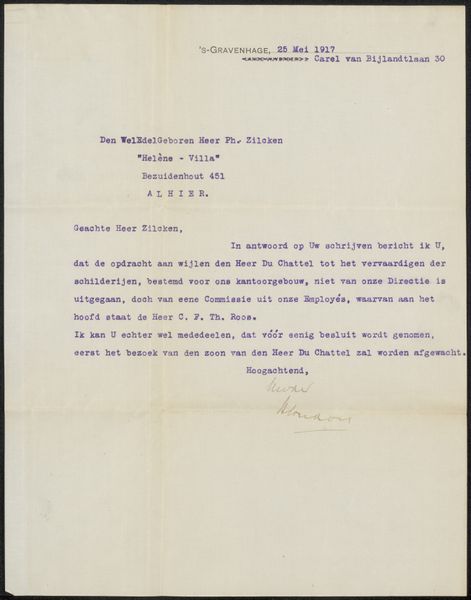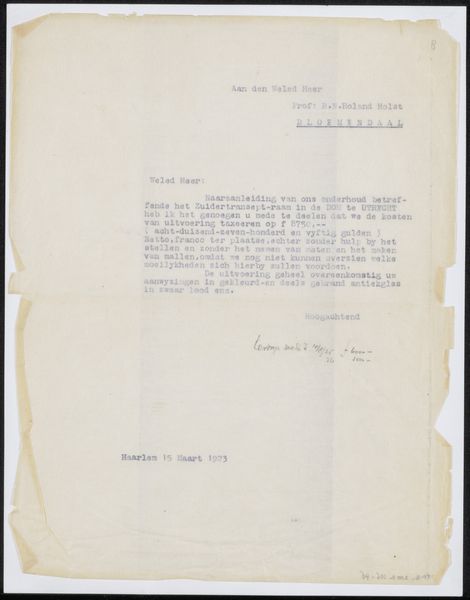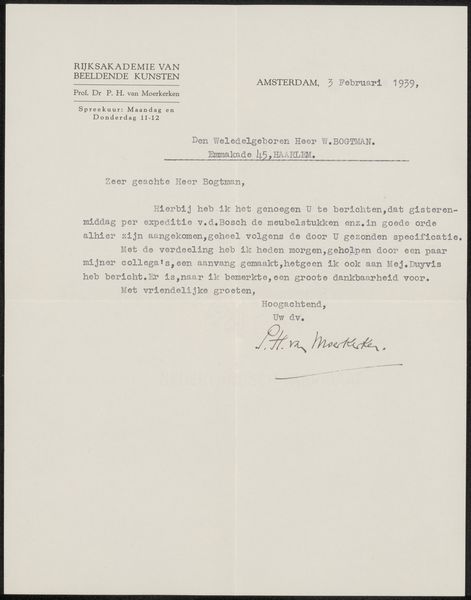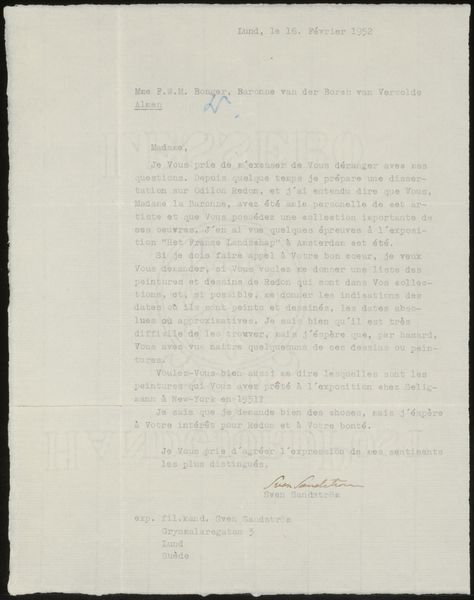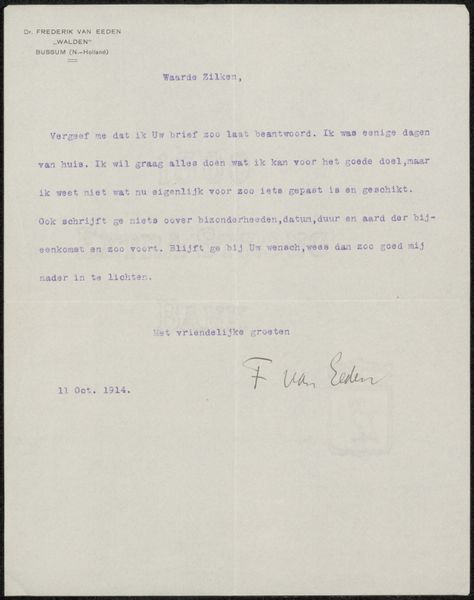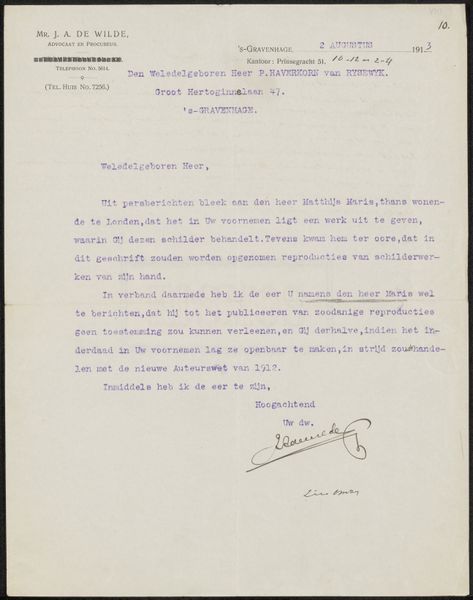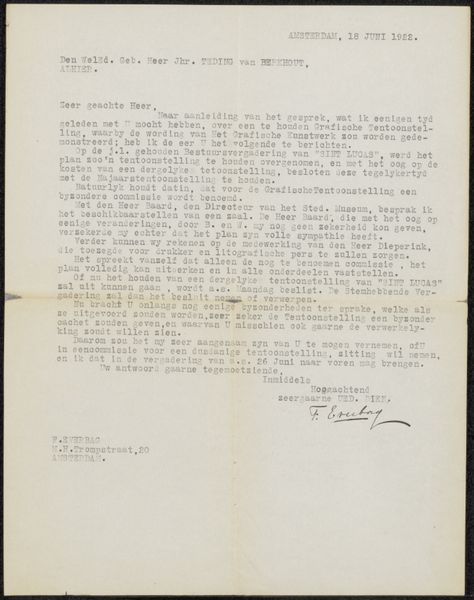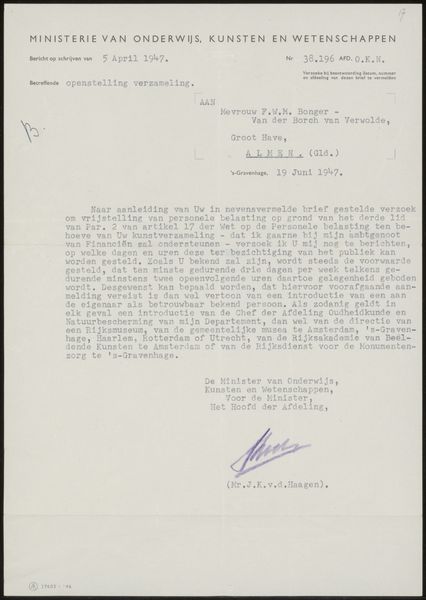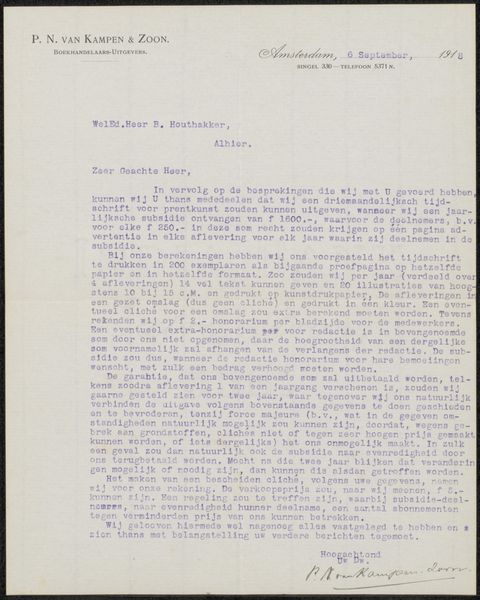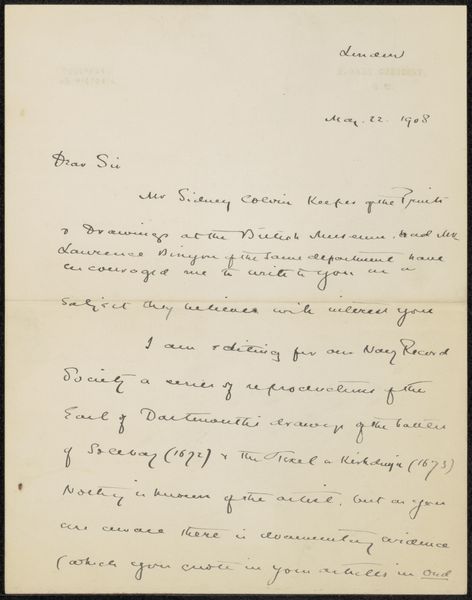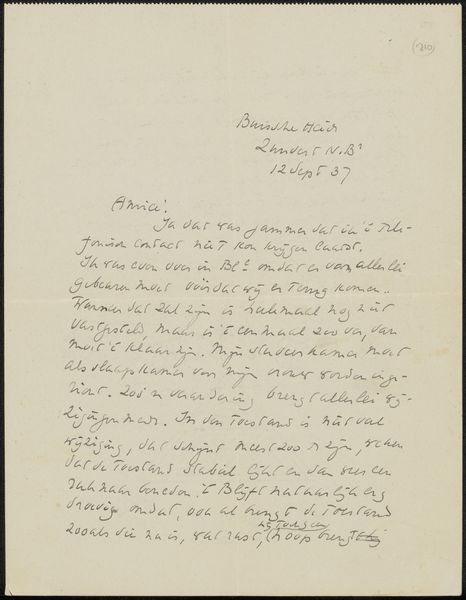
print, paper, photography
#
portrait
# print
#
paper
#
photography
Copyright: Rijks Museum: Open Domain
Curator: This is "Brief aan Pieter Haverkorn van Rijsewijk," or "Letter to Pieter Haverkorn van Rijsewijk," possibly from 1912, a print on paper, even including photography, by James G. Shepherd. Editor: The letter seems like a dry recounting of transactions, devoid of emotional nuance. It also shows a stark economic divide in its discussions of artwork acquisition, something that feels socially distant today, in my opinion. What larger narrative do you see woven within this correspondence? Curator: This letter offers a glimpse into the art market of the early 20th century. Shepherd's role as an intermediary speaks volumes. How does the letter underscore the entanglement of art, wealth, and social networks of that era? Consider the implications of art moving from private collections to auctions like Christie's, revealing both the circulation of art and its commodification. Editor: So it highlights the class and economic barriers within the art world, where ownership and knowledge are privileged positions? Curator: Precisely. And the seemingly mundane details – names of collectors, auction houses, locations – become crucial data points. What does this level of detail reveal about access, or lack thereof? Editor: It really contextualizes art collecting within social circles and financial structures. It is more than just acquiring an object. Curator: Indeed, the exchange transcends mere aesthetics, illuminating power dynamics that define the art world and beyond. So what has this short observation exercise highlighted for you? Editor: Thinking about it critically helps deconstruct the layers of social, political, and economic elements that are invisible at first glance. I see it with fresh eyes! Curator: That's the start of our dialogue on how the art market is always about people.
Comments
No comments
Be the first to comment and join the conversation on the ultimate creative platform.
